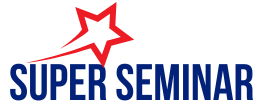In a world where Software as a Service reigns supreme, keeping an eye on performance is no longer just a luxury—it’s a necessity. Imagine trying to drive a car without a dashboard; that’s what managing SaaS applications feels like without proper monitoring. With countless apps vying for attention, it’s easy to lose track of what’s working and what’s not.
SaaS monitoring is the superhero in this digital saga, swooping in to save the day from downtime disasters and sluggish performance. It helps businesses stay ahead of the curve while ensuring that users enjoy a seamless experience. So, whether you’re a startup or an established enterprise, embracing SaaS monitoring will keep your operations running smoothly and your users smiling. After all, who wouldn’t want to avoid the dreaded “404 Error” while trying to impress their boss?
Table of Contents
ToggleUnderstanding SaaS Monitoring
SaaS monitoring plays a critical role in managing cloud-based applications effectively. It enables organizations to track application performance, user interactions, and potential issues in real-time.
What Is SaaS Monitoring?
SaaS monitoring involves the process of observing and analyzing Software as a Service applications. This includes assessing key performance indicators like uptime, response time, and overall user experience. Organizations leverage various tools to collect data that informs performance metrics. Continuous monitoring facilitates proactive identification of issues before they escalate into major problems. It ensures that users receive a seamless experience across applications.
Importance of SaaS Monitoring
SaaS monitoring holds significant importance for businesses of all sizes. Enhanced reliability is one primary benefit that minimizes downtime and improves user trust. Effective monitoring leads to quicker resolutions of performance issues, ultimately enhancing satisfaction. Monitoring tools provide insights into application behavior, supporting informed business decisions. For startups, the absence of monitoring can lead to adverse user experiences, while established companies risk losing valuable customers. Investing in SaaS monitoring guarantees that applications run smoothly and meet user expectations consistently.
Key Metrics to Track in SaaS Monitoring

Tracking key metrics enables organizations to maintain optimal performance and enhance user satisfaction in SaaS applications. Several categories of metrics require attention, including performance, usage, and security metrics.
Performance Metrics
Uptime is a fundamental performance metric to monitor, as it indicates application availability. Organizations should aim for a 99.9% uptime rate to ensure users can access services without interruption. Response time also plays a crucial role; average response times under 200 milliseconds significantly improve user experience. Latency should be monitored to address network delays that could impact performance. Resource usage metrics, such as CPU and memory utilization, highlight resource allocation efficiency. Identifying bottlenecks through these measurements allows for prompt adjustments, maintaining consistency in application performance.
Usage Metrics
User engagement is paramount; tracking active users over specific periods helps organizations assess application popularity. Monthly active users (MAU) versus daily active users (DAU) gives insight into user retention and engagement levels. Session length reveals how long users interact, providing clues about application effectiveness. Feature usage statistics pinpoint which functionalities attract the most attention, guiding future development efforts. Capturing this data supports informed decisions, ultimately enhancing the user experience and fostering loyalty.
Security Metrics
Data breaches pose significant risks to SaaS applications, making security metrics essential. Monitoring user authentication failures alerts organizations to potential security threats. Furthermore, tracking the frequency of successful login attempts can indicate unusual patterns, highlighting vulnerabilities. Regular assessments of security incidents, including the number of breaches or data leaks, serve as critical indicators of system integrity. Compliance with industry standards, such as GDPR or HIPAA, is necessary to mitigate risks. Evaluating these metrics ensures organizations can respond swiftly to security challenges, safeguarding user trust and data integrity.
Tools for Effective SaaS Monitoring
Selecting the right monitoring tools is vital for optimal SaaS management. Various options cater to different needs, ensuring businesses maintain application efficiency.
Popular SaaS Monitoring Tools
Prominent SaaS monitoring tools include Datadog, New Relic, and Grafana. Datadog provides real-time alerts and comprehensive performance dashboards. New Relic excels in application performance monitoring, offering deep insights into user behavior. Grafana, on the other hand, allows customization of visualizations, making data analysis more effective. Each tool features unique functions tailored to specific monitoring requirements, enhancing oversight.
Features to Look For in Monitoring Tools
Essential features in monitoring tools include real-time data analysis and customizable alert systems. Real-time data analysis enables swift identification of performance issues. Customizable alert systems keep stakeholders informed during critical events. Additionally, user-friendly dashboards enhance usability, letting teams focus on metrics without distractions. Integration capabilities with existing tools streamline processes, improving overall efficiency. Choose tools that support scalability, adapting easily to evolving business needs.
Best Practices for SaaS Monitoring
Effective SaaS monitoring practices enhance performance and user satisfaction. Organizations can adopt several critical strategies to optimize their processes.
Regular Audits and Assessments
Conducting regular audits ensures optimal application performance. These assessments help identify bottlenecks, inefficient processes, and areas for improvement. Documentation of findings aids in tracking progress over time. Organizations benefit from scheduled evaluations, allowing proactive adjustments based on performance metrics. High-performing teams prioritize these audits, ensuring consistent uptime and response time. Best practices suggest quarterly audits as a baseline for effective tracking and assessment.
User Feedback and Engagement
Engaging with users provides valuable insights into application performance. Feedback collection should occur through surveys, direct communication, and analytics tools. Users often highlight issues that monitoring may overlook, making their input essential. Active response to feedback fosters trust and loyalty. Organizations gain a deeper understanding of feature usage and user experience through this engagement. Regularly soliciting feedback leads to continuous improvement and greater retention rates.
SaaS monitoring isn’t just a luxury; it’s a necessity for businesses of all sizes. By implementing robust monitoring practices organizations can ensure their applications run smoothly and efficiently. This proactive approach not only enhances performance but also cultivates user trust and satisfaction.
Investing in the right tools and metrics allows companies to stay ahead of potential issues and make informed decisions. Regular assessments and user feedback further contribute to ongoing improvements. Ultimately, effective SaaS monitoring paves the way for sustained growth and success in an increasingly competitive digital landscape.




